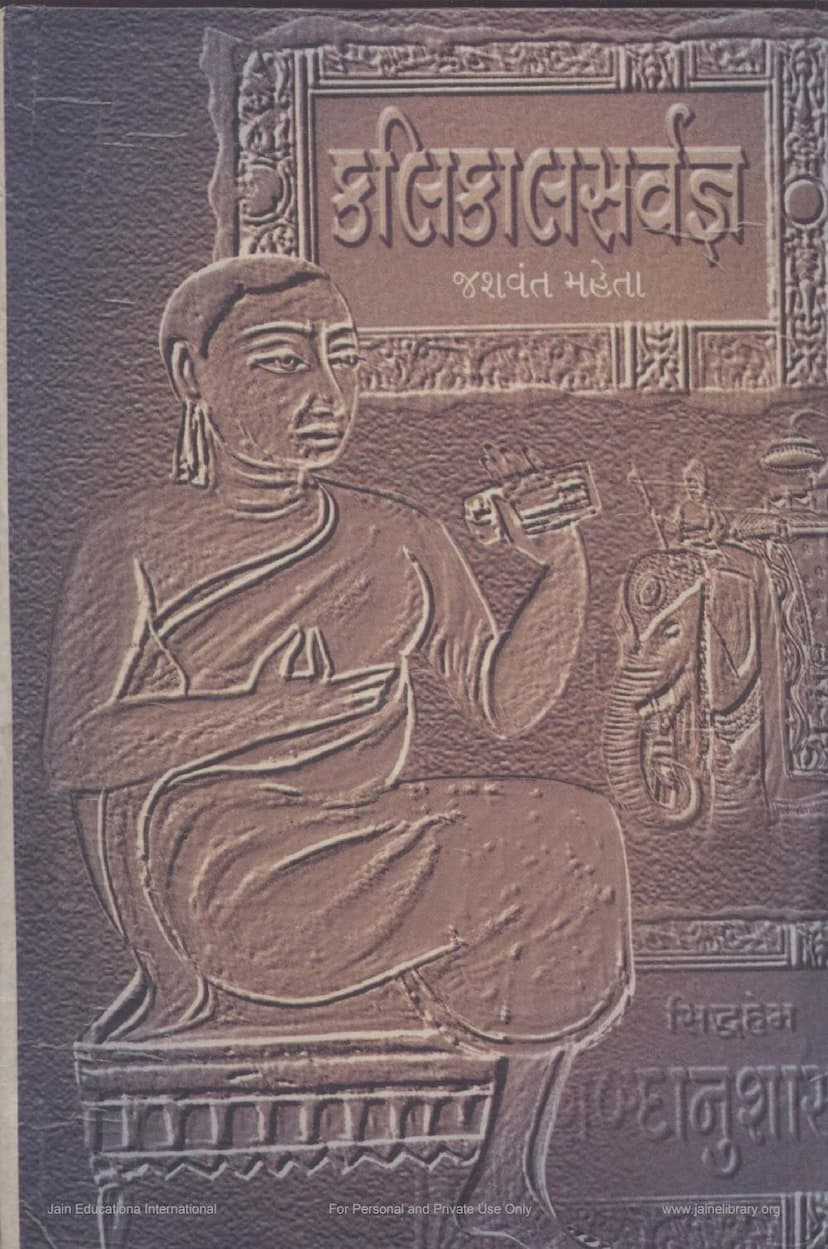Kalikal Sarvagna
Added to library: September 2, 2025

Summary
Here's a comprehensive summary of the Jain text "Kalikal Sarvagna" by Jashvant Mehta, based on the provided pages:
Overall Purpose and Content:
"Kalikal Sarvagna" is a historical cum religious novel written by Jashvant Mehta, published in 2001. The book focuses on the life and teachings of Acharya Hemachandra, also known as Kalikal Sarvagna (the omniscient of the Kali Yuga). It delves into his profound influence on the Gujarat of his time, his contributions to language, philosophy, and social reforms, and his relationships with prominent figures like King Siddharaj Jaising and King Kumarpal.
Key Themes and Narrative Arc:
The novel traces the journey of Hemachandra from his birth as Changdev, his spiritual upbringing, and his rise to become a revered Acharya. It highlights his intellectual prowess, his role in shaping the Gujarati language through the creation of the "Siddhahem Shabdanushasan" grammar, and his deep commitment to ahimsa (non-violence).
Significant Events and Figures:
- Hemachandra's Birth and Early Life: The story begins with the prophecy of a great soul being born to Chanchdev and Pahini Devi, guided by Acharya Devachandrasuri, who foresees Hemachandra's destiny.
- The Solanki Dynasty and its Rulers: The narrative is set during the illustrious Solanki era in Gujarat, a period marked by prosperity, valor, and cultural richness. Hemachandra's life unfolds during the reigns of kings like Mulraj, Bhimdeva, Karnadev, Siddharaj Jaising, and Kumarpal.
- Siddharaj Jaising and the "Siddhahem Shabdanushasan": A pivotal moment is the interaction between Hemachandra and Siddharaj Jaising. Siddharaj, impressed by Hemachandra's intellect and recognizing Gujarat's lack of a definitive grammar, is inspired by Hemachandra to commission the creation of the "Siddhahem Shabdanushasan." This grammar became instrumental in shaping the Gujarati language and is presented as a cornerstone of Gujarat's identity.
- King Kumarpal and Hemachandra's Influence: The novel emphasizes Hemachandra's profound influence on King Kumarpal. Kumarpal, a devout follower, implements Hemachandra's teachings, leading to significant social reforms such as the prohibition of animal sacrifice and alcohol, and the promotion of ahimsa. Kumarpal's decision to prioritize the renovation of the Somnath temple over building his own "Kumarvihar" is highlighted as a testament to his devotion and the Acharya's wisdom.
- Hemachandra's Philosophy of Ahimsa: Ahimsa (non-violence) is presented as the paramount principle advocated by Hemachandra, not just for Jainism but for all of humanity. His efforts to curb violence against animals and promote compassion are central to the narrative.
- Debates and Intellectual Prowess: The text touches upon the intellectual vibrancy of the era, with mentions of debates and discussions involving scholars from across India, showcasing Hemachandra's mastery in various fields.
- Interfaith Harmony and Social Reform: Hemachandra's broad-mindedness and his ability to foster harmony between different religious communities and social strata are also depicted. His advice to Kumarpal to renovate the Somnath temple, despite being a Jain monk, underscores this theme.
- Hemachandra's Legacy: The novel portrays Hemachandra as a towering figure, an "encyclopedia" of knowledge, and a "son of Saraswati" who left an indelible mark on Gujarat's culture and spirituality. His teachings on truth, non-violence, and detachment are presented as guiding principles for all.
Narrative Style and Tone:
The novel is presented as a historical cum religious narrative, blending historical events with religious teachings and spiritual insights. The tone is respectful and laudatory towards Hemachandra and his impact. The inclusion of verses and dialogues adds a literary quality to the text.
Key Takeaways:
"Kalikal Sarvagna" aims to educate readers about the significant contributions of Acharya Hemachandra, emphasizing his role in:
- Language and Literature: The development of the Gujarati language and the creation of foundational grammatical works.
- Social and Religious Reforms: The promotion of ahimsa, compassion, and ethical conduct in society, influencing rulers and the populace alike.
- Intellectual and Spiritual Guidance: His role as a profound philosopher and spiritual leader who guided individuals and the state towards righteous living.
In essence, the book celebrates Hemachandra as a transformative figure who shaped the cultural, linguistic, and spiritual landscape of Gujarat, earning him the title "Kalikal Sarvagna."